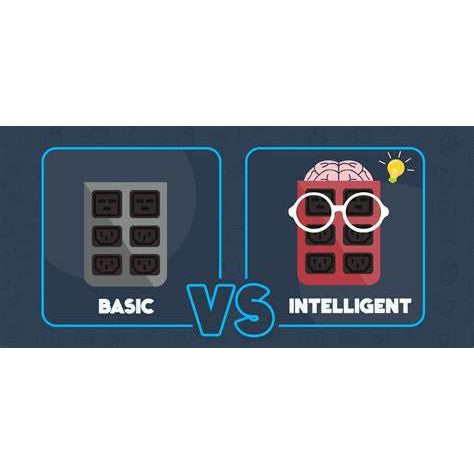Basic PDUs vs. Smart PDUs: Understanding the Key Differences

In the realm of power management, particularly in data centers and IT environments, Power Distribution Units (PDUs) play a crucial role. They ensure the reliable distribution of power to various devices. However, not all PDUs are created equal. The market offers a range of PDUs, from basic models to advanced, smart versions. Understanding the difference between a Basic PDU and a Smart PDU is essential for IT managers and data center operators looking to optimize power management and efficiency. Let's delve into what sets these two types apart.
Basic PDUs: Simplicity and Power Distribution
Basic PDUs are the simplest form of power distribution units available. They are essentially sophisticated power strips, designed to distribute power from a single source to multiple devices.
Characteristics of Basic PDUs:
- Straightforward Functionality: Basic PDUs provide power distribution without any frills. They are plug-and-play devices.
- No Remote Access or Monitoring: They do not offer remote monitoring or access capabilities. Power management and monitoring have to be done manually and on-site.
- Cost-Effectiveness: Being simple in design and function, basic PDUs are generally more affordable.
- Reliability: They are reliable for power distribution but lack advanced features like load balancing or surge protection.
Smart PDUs: Advanced Power Management
Smart PDUs, on the other hand, offer advanced features that go beyond mere power distribution. They are designed to provide enhanced control, monitoring, and management capabilities.
Features of Smart PDUs:
- Remote Monitoring and Management: Smart PDUs allow for the remote monitoring and management of power, enabling IT administrators to oversee power consumption, load levels, and environmental conditions from anywhere.
- Real-Time Data and Alerts: They provide real-time data on power usage and can send alerts in case of anomalies, helping in proactive power management and reducing the risk of overloads.
- Load Balancing and Surge Protection: Advanced smart PDUs can balance loads across circuits and offer surge protection, enhancing the safety and efficiency of power distribution.
- Environmental Monitoring: Some smart PDUs come equipped with environmental sensors that monitor factors like temperature and humidity, which are crucial for maintaining optimal conditions in data centers.
Choosing Between Basic and Smart PDUs
When deciding between a basic and a smart PDU, consider the following factors:
-
Your Power Management Needs: If your requirement is simply to distribute power to multiple devices, a basic PDU might suffice. However, if you need detailed insights into power usage, environmental monitoring, and remote management capabilities, a smart PDU is the way to go.
-
Budget Constraints: Basic PDUs are more cost-effective but offer limited functionality. Smart PDUs are an investment but provide long-term benefits in power management and efficiency.
-
Future Scalability: If you anticipate future growth or increased complexity in your power management needs, investing in a smart PDU can provide more flexibility and scalability.
-
Operational Environment: In environments where power usage needs to be carefully managed to prevent downtime (like data centers), smart PDUs offer necessary features that basic PDUs do not.
Conclusion
In conclusion, while both basic and smart PDUs serve the fundamental purpose of distributing power to multiple devices, smart PDUs offer advanced features for comprehensive power management and efficiency. The choice between the two should be based on your specific power management needs, budget, and the scale of operations. As the demand for data and uptime continues to grow, smart PDUs can be a valuable asset in optimizing power usage, enhancing efficiency, and preventing costly downtime in critical IT environments.







